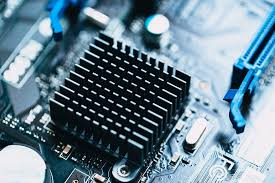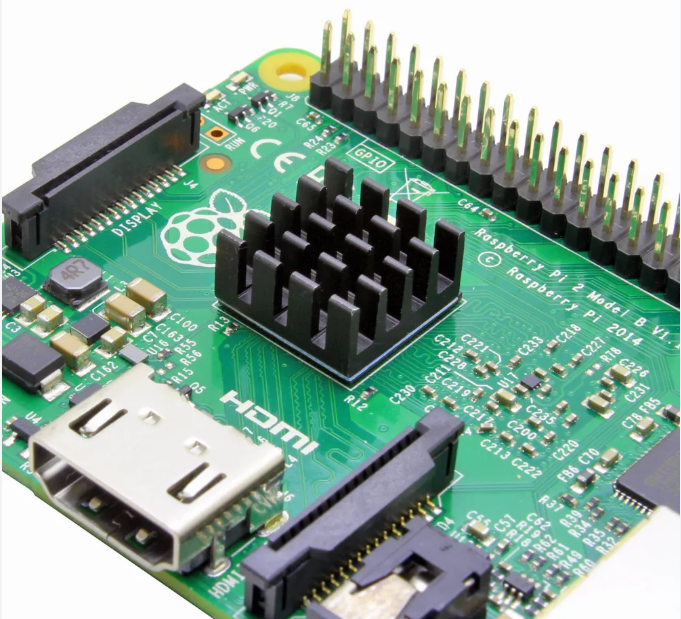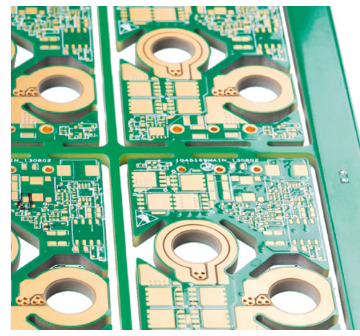In the fast-evolving world of electronics, managing heat in high-power designs is a critical challenge. Double-sided PCBs, which have components mounted on both sides, often struggle with heat dissipation due to limited space and increased component density. So, how can you enhance heat dissipation on double-sided PCBs? The answer lies in integrating heatsinks and adopting effective thermal management strategies. In this comprehensive guide, we’ll explore the importance of PCB thermal management, the role of heatsinks in double-sided PCB designs, and practical methods to improve cooling for high-power PCB applications.
Why Heat Dissipation Matters in Double-Sided PCBs
Double-sided PCBs are widely used in compact and high-performance devices because they allow for more components in a smaller footprint. However, this density often leads to significant heat buildup, especially in high-power PCB designs. Excess heat can degrade component performance, reduce lifespan, and even cause system failures. For instance, a temperature increase of just 10°C can halve the lifespan of certain electronic components, according to reliability studies.
Effective heat dissipation ensures that components operate within safe temperature ranges, maintaining reliability and performance. Adding heatsinks to double-sided PCBs is a proven method to manage thermal challenges, but it requires careful planning and design to achieve optimal results. Let’s dive into the key aspects of PCB thermal management and how heatsinks play a vital role.

Understanding PCB Thermal Management Challenges
Thermal management in PCBs involves controlling the heat generated by components and ensuring it is dissipated efficiently. In double-sided PCBs, the challenges are amplified because heat sources exist on both sides, and airflow is often restricted due to compact designs. High-power components like processors, power transistors, and LEDs generate significant heat, which can create hotspots if not addressed.
Without proper cooling, temperatures can rise beyond the safe operating limits of components, often exceeding 85°C for standard ICs or 125°C for high-power modules. This can lead to thermal runaway, where components fail due to excessive heat. To combat this, PCB cooling methods must focus on transferring heat away from critical areas and into the surrounding environment.
Key Factors Affecting Heat Dissipation in Double-Sided PCBs
- Component Density: More components mean more heat sources in a confined space, making natural convection less effective.
- Board Material: Standard FR-4 materials have low thermal conductivity (around 0.25 W/m·K), limiting heat transfer through the board.
- Limited Space: Double-sided designs often leave little room for large cooling solutions like fans or bulky heatsinks.
- Power Levels: High-power PCB designs, such as those in power supplies or motor controllers, can generate heat loads of 10W or more per component.
Addressing these challenges requires a combination of design techniques and cooling solutions tailored for double-sided layouts. Heatsinks, when properly integrated, offer a practical and efficient way to manage heat in such scenarios.
What Are Heatsinks and How Do They Work?
A heatsink is a passive cooling device designed to absorb and dissipate heat from electronic components. Typically made of materials with high thermal conductivity, such as aluminum (around 205 W/m·K) or copper (approximately 400 W/m·K), heatsinks work by increasing the surface area available for heat transfer to the surrounding air. This process relies on conduction (heat moving from the component to the heatsink) and convection (heat dissipating into the air).
In double-sided PCBs, heatsinks can be attached to components on one or both sides, depending on the design. They are particularly effective for high-power components that generate significant heat, such as voltage regulators or power amplifiers. By drawing heat away from these components, heatsinks help maintain safe operating temperatures, often reducing component surface temperatures by 20-30°C under load.

Choosing the Right Heatsink Materials for PCB Applications
The choice of heatsink material is crucial for effective thermal management. The material must have high thermal conductivity to efficiently transfer heat, but it should also be cost-effective and compatible with the PCB assembly process. Below are the most common heatsink materials for PCB designs:
1. Aluminum
Aluminum is the most widely used material for heatsinks due to its excellent thermal conductivity, lightweight nature, and affordability. With a thermal conductivity of about 205 W/m·K, aluminum heatsinks are ideal for most double-sided PCB applications. They are also easy to manufacture into various shapes, such as finned or flat designs, to maximize surface area for cooling.
2. Copper
Copper offers superior thermal conductivity (around 400 W/m·K), making it ideal for extremely high-power PCB designs where heat dissipation is critical. However, copper is heavier and more expensive than aluminum, so it is typically used in specialized applications or combined with aluminum in hybrid designs (e.g., a copper base with aluminum fins).
3. Advanced Materials
For cutting-edge applications, materials like graphite or diamond-based composites are emerging as options due to their exceptional thermal conductivity (up to 2000 W/m·K for synthetic diamond). These materials are expensive and less common but may be used in niche high-power PCB designs where cost is not a constraint.
When selecting a heatsink material, consider factors like thermal performance, weight, cost, and compatibility with the PCB layout. For most double-sided PCB applications, aluminum provides a balanced solution, while copper may be reserved for critical high-heat components.
PCB Cooling Methods for Double-Sided Designs
While heatsinks are a cornerstone of thermal management, they are often used alongside other PCB cooling methods to enhance overall heat dissipation. Here are some effective strategies for double-sided PCBs:
1. Thermal Vias
Thermal vias are small holes filled or plated with conductive material (usually copper) that transfer heat from one side of the PCB to the other. In double-sided PCBs, thermal vias can connect a heat-generating component on one side to a heatsink or copper plane on the opposite side. A typical thermal via array might include 10-20 vias with a diameter of 0.3-0.5mm, improving heat transfer by up to 50% compared to a solid board.
2. Copper Planes and Pours
Large copper areas on the PCB act as heat spreaders, distributing heat away from hotspots. In double-sided designs, dedicate unused areas on both layers to copper pours connected to ground or power planes. This can reduce thermal resistance by 20-30%, depending on the copper thickness (e.g., 1oz or 2oz copper).
3. Active Cooling with Fans
For high-power PCB designs where passive cooling is insufficient, small fans can be added to force air over heatsinks and components. While this adds complexity and power consumption, it can lower temperatures by an additional 10-15°C compared to passive methods alone.
4. Component Placement Optimization
Strategically placing high-power components away from each other on both sides of the PCB prevents localized hotspots. Ensure that heatsinks or thermal vias are positioned near these components for maximum effect. Simulation tools can help predict heat distribution and optimize placement before manufacturing.

Step-by-Step Guide to Adding Heatsinks to Double-Sided PCBs
Integrating heatsinks into a double-sided PCB requires careful planning to ensure compatibility with the board layout and assembly process. Follow these steps to achieve effective heat dissipation:
Step 1: Identify High-Heat Components
Start by identifying components that generate the most heat, such as power transistors, regulators, or microcontrollers. Check their datasheets for power dissipation ratings (e.g., 5W or 10W) and maximum operating temperatures to determine cooling needs.
Step 2: Select an Appropriate Heatsink
Choose a heatsink based on the component’s heat output and available space on the PCB. For double-sided designs, consider low-profile heatsinks for components on one side and ensure clearance for components on the opposite side. Calculate the required thermal resistance (Rth) using the formula: Rth = (Tj - Ta) / P, where Tj is the junction temperature, Ta is ambient temperature, and P is power dissipation.
Step 3: Design Mounting and Attachment
Determine how the heatsink will attach to the component or PCB. Common methods include thermal adhesive, clips, or screws. Ensure the attachment method provides good thermal contact without damaging the component or board. For instance, thermal interface materials (TIMs) like thermal paste can improve heat transfer by reducing contact resistance by up to 40%.
Step 4: Incorporate Thermal Vias and Copper Planes
If the heatsink is on one side but the component is on the other, use thermal vias to bridge the heat path. Add copper planes around the component to spread heat before it reaches the heatsink, enhancing overall dissipation.
Step 5: Test and Validate
After assembly, test the PCB under load to measure component temperatures using a thermal camera or sensors. Ensure temperatures stay within safe limits (e.g., below 85°C for most ICs). If hotspots persist, adjust the heatsink size, add more vias, or consider active cooling.
Best Practices for High-Power PCB Design with Heatsinks
Designing high-power PCBs with effective thermal management requires attention to detail beyond just adding heatsinks. Here are some best practices to ensure success:
- Use Simulation Tools: Thermal simulation software can predict heat distribution and identify potential issues before production. Tools can model heat flow with accuracy within 5-10% of real-world results.
- Balance Cost and Performance: Opt for cost-effective materials like aluminum for most applications, reserving copper for critical components. Avoid over-engineering cooling solutions that drive up costs unnecessarily.
- Consider Environmental Factors: Account for the operating environment, such as ambient temperature (e.g., 25°C vs. 50°C) and airflow availability, when sizing heatsinks.
- Minimize Thermal Resistance: Use high-quality thermal interface materials and ensure tight contact between components and heatsinks to reduce thermal resistance, ideally below 1°C/W.
Conclusion: Mastering Heat Dissipation in Double-Sided PCBs
Enhancing heat dissipation in double-sided PCBs is essential for ensuring the reliability and performance of high-power designs. By integrating heatsinks and adopting complementary PCB cooling methods like thermal vias and copper planes, you can effectively manage heat even in compact, densely packed layouts. Choosing the right heatsink materials for PCB applications, such as aluminum or copper, and following a structured design process further optimizes thermal management.
At ALLPCB, we understand the importance of thermal management in modern electronics. Whether you’re working on a high-power PCB design or need assistance with double-sided PCB heatsink integration, our expertise and manufacturing capabilities can help bring your projects to life with efficiency and precision. Prioritize PCB thermal management in your next design, and ensure your devices operate cooler, longer, and better.



